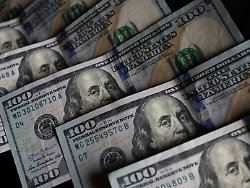Friday 10th December 2021
Problems with energy costs
Record inflation in the US is 6.8 percent
Inflation in the US has reached a new record high: it is 6.8 percent. This increases the pressure on the central bank to cut its bond purchases. President Biden tries to relativize the data.
Inflationary pressure in the US increased again more clearly than expected in November. According to a statement by the US Department of Labor, consumer prices rose 0.8 percent from the previous month and were 6.8 percent above the level of the same month last year. That was the highest level since June 1982. In October the rate was 6.2 percent, the fastest increase in 31 years.
Consumer prices excluding energy and food prices rose by 0.5 percent on a monthly basis and by 4.9 percent on an annual basis. Core inflation thus reached the highest level in 13 years. Economists had expected monthly price increases of 0.7 and 0.5 percent and annual inflation rates of 6.2 and 4.9 percent. Energy prices rose by 3.5 percent month-on-month and food prices by 0.7 percent.
US President Joe Biden had already prepared Americans for very high inflation. At the same time, he warned against excessive fears. “The information that will be released on energy prices in November does not reflect today’s reality,” said Biden. The data would also not show the expected price reductions in the coming weeks and months.
Fed has already reduced bond purchases
In the US, inflation is picking up due to factors that drive prices such as problems with global supply chains and high energy costs. Unlike in Germany, for example, wages are also rising sharply at the same time – whereupon companies raise prices to compensate.
In the eurozone, core inflation – that is, inflation without considering strongly fluctuating energy and food prices – rose less sharply. In Germany, one-off effects such as the withdrawal of the VAT cut also play a role.
The high inflation in the US is increasing the pressure on the US Federal Reserve to shut down its large-scale bond purchases faster than previously planned. With the program, the Fed is pumping additional money into the financial markets to keep lending rates low and stimulate the economy. It had started cutting purchases by $ 15 billion a month in mid-November.
According to Fed Chairman Jerome Powell, discussions will likely be held at the upcoming interest rate meeting next week as to whether the rate of reduction should be tightened in view of the persistently high rate of inflation. The Fed may also soon raise its key interest rate. So far, three interest rate hikes have been expected on the market in the coming year.
